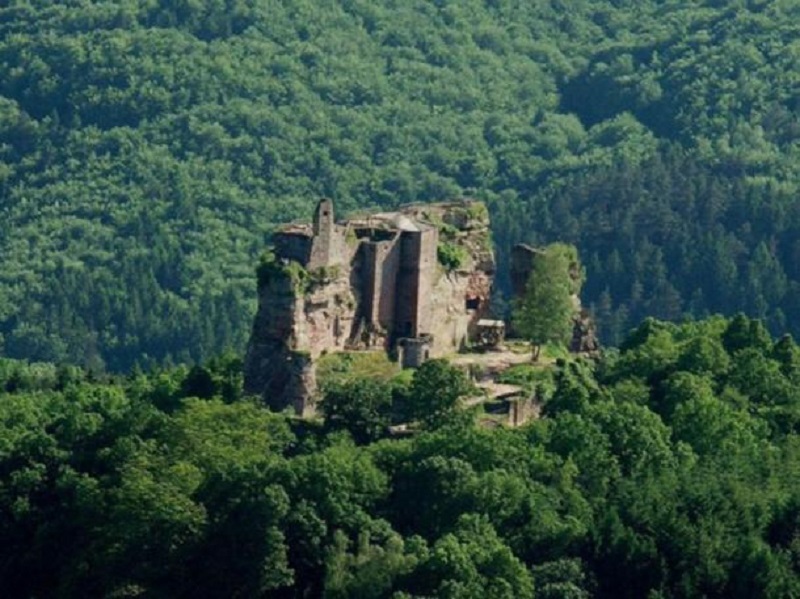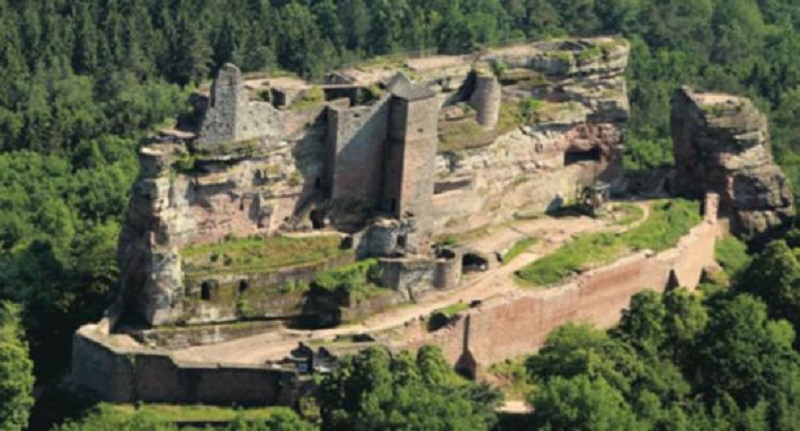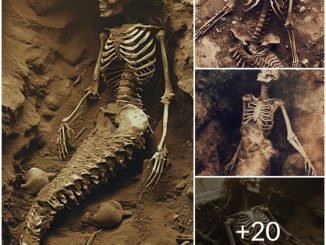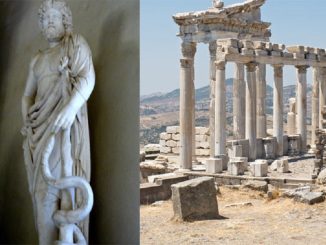Fleckenstein Castle is a castle located near Lembach, in the Alsace region of eastern France. This castle is known to have existed since the 12th century and was the property of the powerful Fleckenstein family for over half a millennium. Fleckenstein Castle was strategically placed to control the surrounding area and it was designed to withstand enemy attacks. However, the castle eventually fell to the troops of Louis XIV, who then proceeded to destroy it with gunpowder. The once mighty Fleckenstein Castle was abandoned and eventually developed into a tourist attraction.
An impregnable fortress
The first mention of the name Fleckenstein was in 1174. Gottfried of Fleckenstein was a member of the court of Holy Roman Emperor Frederick Barbarossa. The Fleckensteins held the castle in the name of the Hohenstaufens (the dynasty to which Frederick Barbarossa belonged). The castle is built on a sandstone cliff more than 300m (985ft) high. From this location, the owners of Fleckenstein Castle could keep an eye on one of the routes connecting the regions of Alsace and Lorraine, while also protecting the town of Haguenau, where Frederick Barbarossa had established the royal palace. The Fleckenstein family has held the castle for nearly 550 years. In 1720, the last Baron of Fleckenstein, Henri Jacques, died without leaving a male heir, resulting in the castle falling into the hands of another noble family.
A castle in ruins
It may be pointed out that by the time ownership of Fleckenstein Castle changed hands, it was already in ruins. In 1689, Louis XIV’s French army, under the command of Ezéchiel du Mas, Comte de Mélac, completely destroyed Fleckenstein Castle with gunpowder. Mélac was famous for ravaging enemy lands rather than engaging in fierce battles as was French policy at the time. There were also fears of an advance by the Imperial Army, which further prompted the castle’s destruction, lest it fall into enemy hands.

View of Fleckenstein Castle, seen from Hohenbourg. (CC of SA 3.0)
A Bishop is detained
Throughout the history of Fleckenstein Castle, a number of interesting things have happened in the castle. For example, in 1275, Fredéric de Bolanden, Bishop of Spire, was taken prisoner in Fleckenstein Castle. The bishop, who was elected in 1272, received the support of the Fleckensteins in exchange for certain favors. However, the bishop soon forgot his promise, no doubt angering the Fleckensteins. With no imperial power due to the Great Interregnum, Wolfram of Fleckenstein was able to capture the bishop and hold him as a prisoner in the castle. Unfortunately for the Fleckensteins, Rudolph I was elected King of the Romans the following year. The new ruler of Germany decided to assert his power by besieging Fleckenstein Castle. Realizing that his situation was hopeless, Wolfram decided to surrender and release the bishop.

Fleckenstein Castle (Châteaux Alsace Line)
In 1813, Fleckenstein Castle was purchased by General Olivier Harty, a commander of Napoleon’s Grande Armée of Irish descent. The castle was renamed Pierrebourg, the French equivalent of Fleckenstein. However, it was only in 1871 that visitors were able to see inside the castle thanks to Joseph von Stichaner, the German ‘sous préfet of Wissembourg’. Furthermore, the development of the railway has made the monument more accessible to tourists. Since then, further developments have been made to the ruins to ensure greater safety and convenience for visitors. For example, between 1997 and 2000, major works were carried out to ensure the structure was safe for visitors and to strengthen the monuments. Additionally, in 2002, the old farm buildings were renovated and turned into facilities for the public, such as a ticket office, cafe and shop. According to one website, Fleckenstein Castle is the most visited ruin in the Alsace region, with nearly 70,000 visitors each year. According to another website, this castle is the second most visited castle in Alsace, after Haut-Kœnigsbourg Castle.


